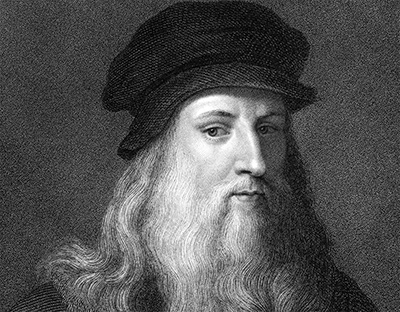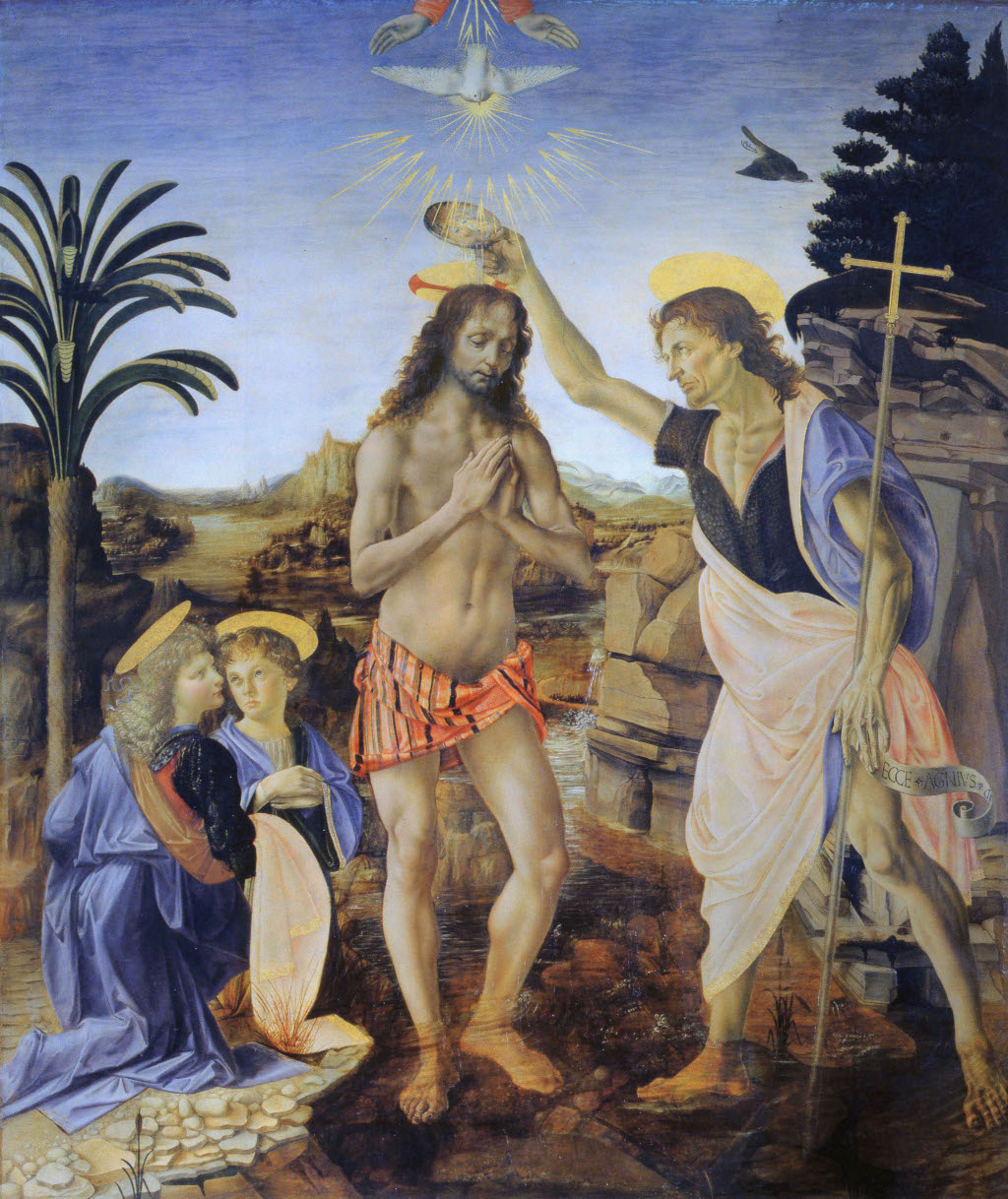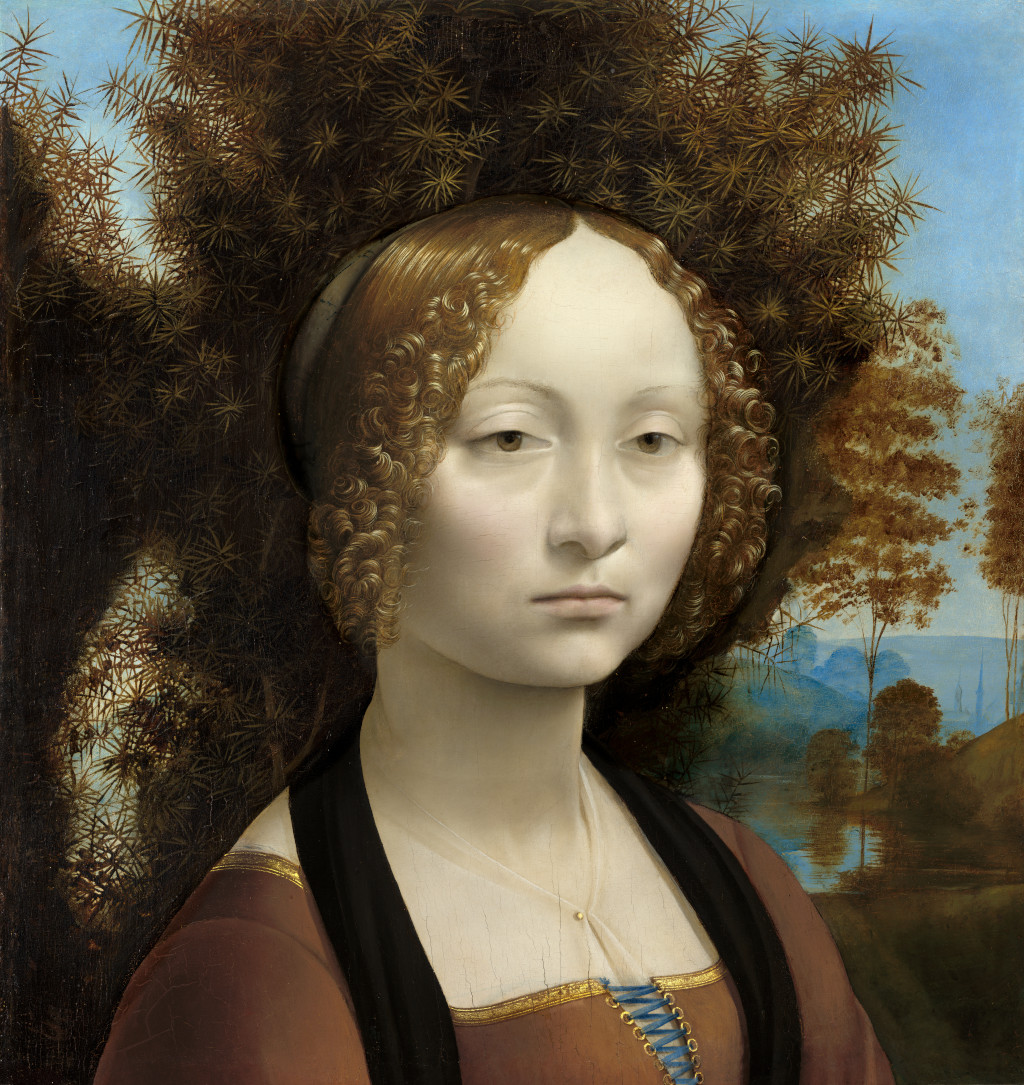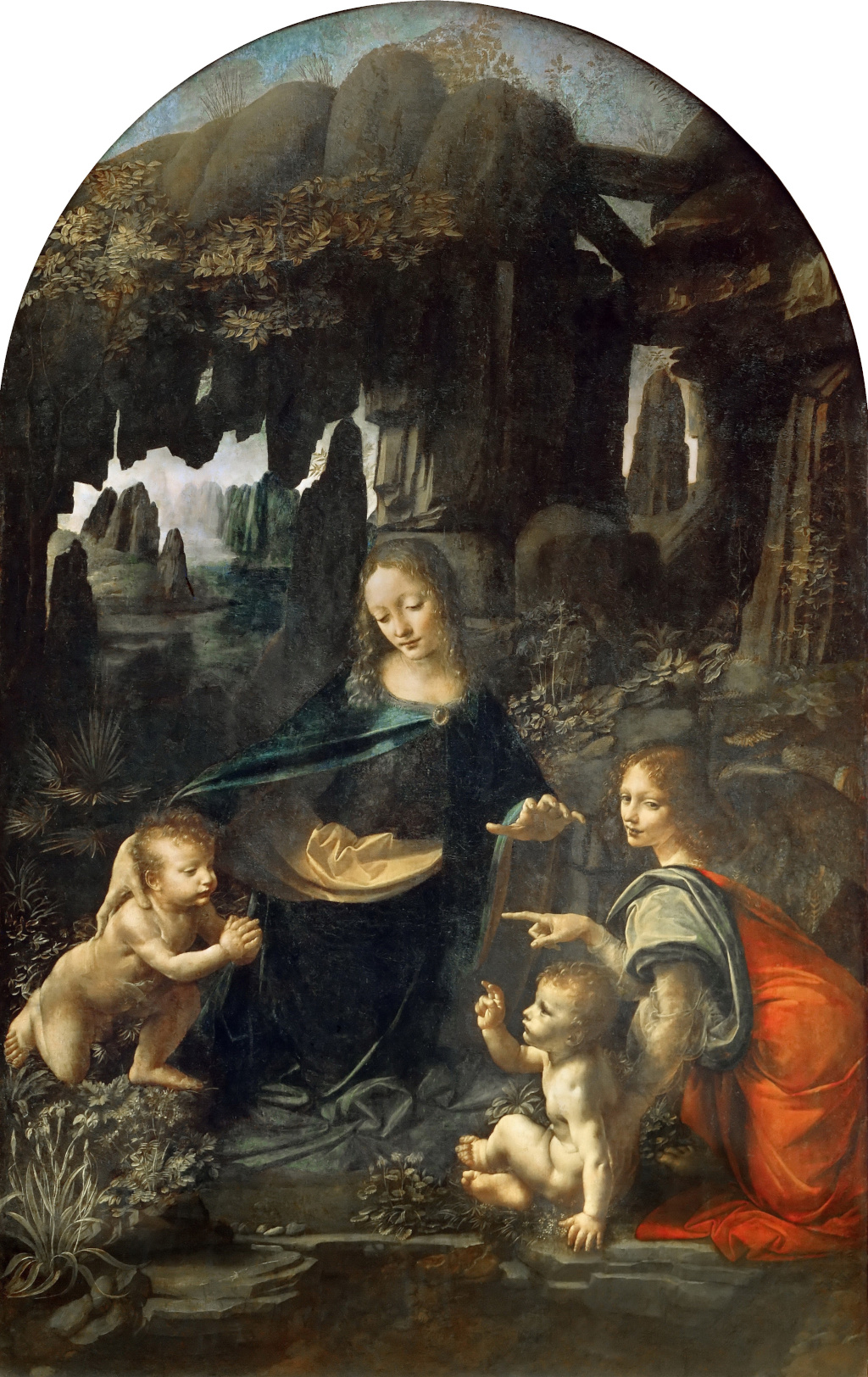This Leonardo da Vinci biography covers his life in full, from his childhood in Vinci, to the key moments in his career, such as the breaktaking Mona Lisa, and his time working as an engineer.
Introduction
Leonardo would grow to become a true Renaissance master, leaving behind a strong legacy in a variety of artistic disciplines, such as painting, drawing, science and engineering. There seemed no limit to his curiosity, nor his adaptability, and as his reputation soared, he would be courted by a number of wealthy and powerful patrons across Italy.
The artist was constantly striving for the most prestigious commissions and quickly realised that in order to acquire them, he would have to relocate himself around Italy from time to time. This enabled him to build strong relationships with a number of significant donors, bringing him the opportunities that he craved.
Da Vinci also built up a large studio of assistants, in a similar manner to how he learnt his trade in the first place under the great master, del Verrocchio. It therefore became necessary for him to find continual work in order to finance their wages, but he also was skilled in selling his services, and promoting his considerable talents.
There was also a high level of competitiveness between artists within Italy and so reputation became essential. Da Vinci was somehow able to gain acceptance in a wide range of disciplines, whilst most others focused merely on one or two. This caused some to label him a genius, and on viewing his achievements within this biography, it is hard to disagree with that sentiment.
This Leonardo da Vinci biography discusses his early years in Vinci, followed by his apprenticeship under Andrea del Verrocchio, which would shape much of his early work as an artist. The main part of his career is then categorised into periods in different Italian cities, plus his final years in France in the early 16th century. There is also information on his legacy as an artist, scientist and engineer.
Table of Contents
- Introduction
- Birth and Early Life
- Apprenticeship under Andrea del Verrocchio
- First Florentine Period
- First Milanese Period
- Second Florentine Period
- Second Milanese Period
- Rome
- France
- Death
- Legacy
- References
Birth and Early Life
Leonardo da Vinci was born on the 15th of April, 1452 in the Tuscan city of Vinci which lied in the Republic of Florence, Italy.
Leonardo was the illegitimate son of Piero da Vinci and Caterina (surname unknown, possibly Buti del Vacca). Both would marry separately, giving the artist as many as sixteen half-siblings across his lifetime. Without a stable relationship between his parents, Leonardo would spend much of his childhood living with wider family members, such as his grandfather, Antonio da Vinci as well as possibly his uncle, Francesco da Vinci, with whom he was also close.
The artist's great great grandfather, Michele, had served as a notary, and this role had passed down the generations, meaning Leonardo would likely have followed into this too, were he not an illegitimate child2. This apparent disadvantage allowed Leonardo a flexibility in how he approached his own life, but also placed the responsibility for his career very much on his own shoulders.
Apprenticeship under Andrea del Verrocchio
Leonardo joined the workshop of Florentine master, Andrea del Verrocchio in around 1466. He had moved with his family to Florence just a few months earlier and this afforded an exceptional opportunity to work under the wing of this respected painter and sculptor.
Da Vinci would work his way up from studio boy to fully fledged apprentice within three years and within this studio he would learn the finest techniques in drawing, painting and sculpture. He would also spend time in the company of other significant artists who would also help him to broaden his artistic understanding and knowledge.
Del Verrocchio is known to have afforded his apprentices considerable independence and responsibility, involving them in many of his own commissions, which enabled the likes of Da Vinci to progress quickly and prepared them well for life as a professsional artist in their own right at a later date.
First Florentine Period
In around 1472, the Leonardo chose to leave the studio of Verrocchio and set himself up as an independent artist for the first time. Despite his inexperience, his next decade based in Florence would produce some of his finest paintings, including his portrait of Ginevra de Benci. This period was important in allowed Leonardo to mature as a young man, but also to start to develop his own style, and come out of the shadow of Verrocchio.
First Milanese Period
Leonardo da Vinci saw an opportunity to progress his career by working for the Duke of Milan, Ludovico Sforza. He therefore relocated to the city in 1482 and he would remain in the city until the turn of the century. His decision was proven correct, with some of his most significant commissions coming during this era, including Virgin of the Rocks and The Last Supper.
Second Florentine Period
The Battle of Novara in 1500 resulted in Ludovico Sforza being overthrown, leaving little reason for Leonardo to remain in Milan. He first headed to Venice before returning to Florence. Venice gave him the opportunity to finally work as a military and hydraulic engineer, which is something he had aspired to for many years.
Leonardo then concentrated again on visual arts once back in Florence, before continuing to travel around the country again for a period, whilst working as an engineer once more. Political instability across Italy had unsettled Leonardo on many occasions by now, but he consistently managed to pivot in new directions, and could rely on a strong reputation that he had built up over previous decades.
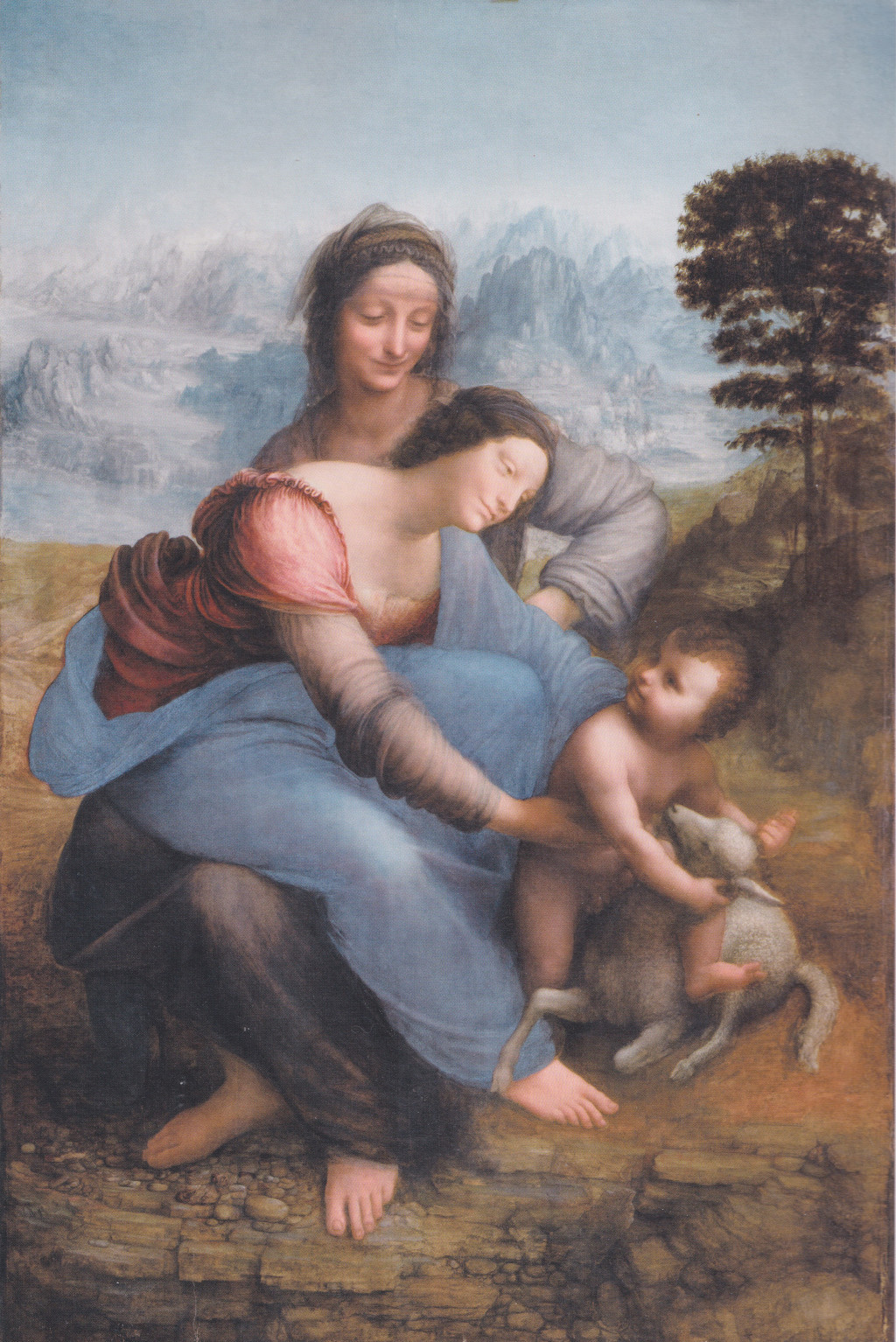 The Virgin and Child with Saint Anne
The Virgin and Child with Saint Anne
Second Milanese Period
The artist continued to receive offers from across Italy and eventually chose to relocate back to Milan, with the French rulers also showing an interest in his work. This is also the period in which Da Vinci gave his strongest focus to sculpture, with a seemingly endless desire to spread into new artistic disciplines.
Rome
Leonardo lived in Rome between the years of 1513 to 1516, where he would come into close contact with fellow masters, Michelangelo and Raphael. He received monthly payments from the Pope and took on a variety of projects whilst living here, including architecture, painting and engineering tasks.
France
Leonardo agreed to work for King Francis I of France in 1516, just a year after the city of Milan had been taken over by the monarch. As part of the role, it was necessary for Da Vinci to relocate to France. Here, he was given the the manor house Clos Lucé as his residence and immediately set about taking on a number of commissions for the King.
Death
Leonardo da Vinci died on the 2nd of May, 1519 at the age of 67 in Clos Lucé, central France.
Cause of Death
Leonardo da Vinci is believed by most sources to have died from a stroke. He had fell unwell for some time, and arranged for a number of notable monarchs and religious figures to join him at his bedside. There has since been much discussion and embellished stories surrounding his final hours, with a number of artists also producing paintings of his final moments.
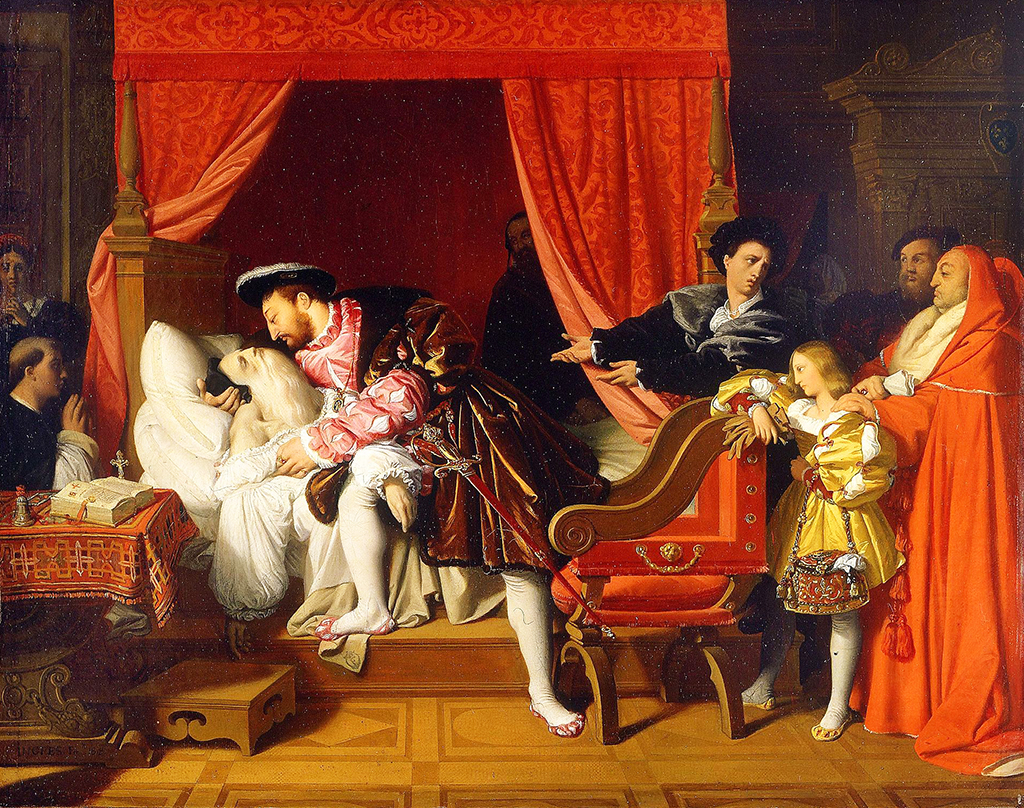 The Death of Leonardo da Vinci by Jean-Auguste-Dominique Ingres
The Death of Leonardo da Vinci by Jean-Auguste-Dominique Ingres
Legacy
Leonardo da Vinci's legacy cannot be overestimated. He lifted Renaissance art to a new level, particularly within the field of portraiture, introducing several advanced techniques which produced a more complex and precise image. Leonardo's skills of observation also enhanced our knowledge of the natural world.
As an engineer and scientist, Leonardo also made a number of advancements which would impact these disciplines in later centuries. A number of his inventions continue to be used around the world today, in amended forms which make use of modern technology and materials.
References
- Leonardo. The Complete Paintings and Drawings, Frank Zöllner & Johannes Nathan, Taschen
- Leonardo da Vinci, Walter Isaacson
- The Science of Leonardo, Fritjof Capra



